08/04/2020 – Interview with George Levasseur, VFDA Board Member
“There’s no reason you can’t work together” : A Sport Fisherman’s Decades Long Tenure on VFDA’s Board of Directors
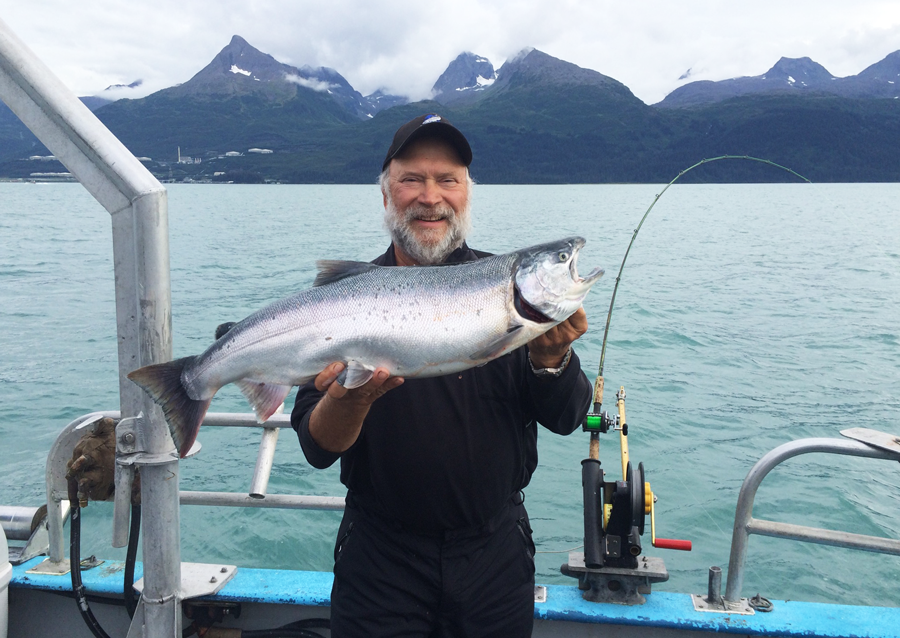 George Levasseur, VFDA Board Member
George Levasseur, VFDA Board Member
Could you tell us a little about you and your background with VFDA?
“I grew up in Northern Minnesota on a lake near Canada. Fishing was always a big part of our lives. I can remember being 3 years old and my dad rowing on the lake. We’d have a couple of notch boards with green line around them, dragging for big northern pike and pulling them in by hand. That’s the earliest memories I have of fishing.
I always enjoyed the outdoors growing up. I graduated from high school and went onto the University of Minnesota. I graduated there in Science & Engineering. I met Patty during college years, and we dated for three years before getting married. We had planned to go to Alaska on our honeymoon, which we did. We had a little pop-up camper, and we were two newlyweds–just young kids–and we didn’t know where we were headed or what we were going to do. We had about a thousand dollars, and we just toured Alaska. We fell in love with Homer, Valdez, and Cordova, but Valdez had a real nice summer that year and the fish were jumping in the river, and there was all kinds of wildlife. We thought, “Boy, this really is a nice place.” I had met one of the [Department of Transportation] engineers, and he asked me what my background was. I told him, and he said, “I need someone to run this part of the project on Thompson Pass.” I said, “I can do it.” Maybe a little training needed, but I started my career in August of 1974 with DOT. I was the grade inspector, and things like that. I did testing of soils and aggregate concretes. That led to bridge building in the wintertime when we were trying to get the road ready for the transportation of the pipe.
I spent 30 years in that. Design, construction, maintenance. After about 10 years, I became manager over for the Southcentral District. That continued, and then I was asked to become State Maintenance Engineer in Juneau under Governor Murkowski. I finished my paramount there, and then I retired.
What happened in those early days was that Jason Wells had put together a small little hatchery at Crooked Creek, right on the edge of town there. And his dad, Max was on the board of directors. Max worked at the department as well, and was their supply officer. I talked to Max at length about it, and said, “If there’s ever an opportunity that I can help there, I’d be more than willing to do that. I love to fish, and this really sounds very interesting.”
The original board was five members, and they were all pretty much commercial fishermen. After a short time they decided to expand the board to seven. They added a financial advisor- the local banker in town and bank manager, and then they wanted a sportfishing representative. They asked me to serve in this position. So that’s how I got on the board, and I’ve been on the board now, gosh, for close to forty years.
So that’s kind of a history of that. I’ve spent most of my time sportfishing, but in the 1980s we got a bigger boat and went longlining and participated in commercial Halibut derbies, the 24-hour openers, and that led to some other things. But I served on the board in other capacities, too. I was the Secretary/Treasurer for many years and then on the Finance Committee, of course. The main thing was to try to get money for the sports program. Originally, it was just for pinks, and then they expanded a little into chums. I went before the Valdez City Council for money–we had no money, we were in pretty tough shape financially–and I got money from the City Council to buy fish food. We were also able to go get Coho out of Robe Lake, and get our Coho program started. Over time, we increased the number of eggs. I also got the money to get a weed harvester that helped reclaim Robe Lake, which was being taken over by weeds. Back in the late 1950s, they decided to clean up the lake, so they diverted a glacial stream. It was really nice, but then all the weeds found the extra sunlight and just took over.
Most of my years as a board member was on the sportfishing side as that representative. I pushed hard for increasing our numbers of Coho and trying to build that run up so that we could bring in lots of tourists. Over the years it’s probably been the most rewarding civic involvement that I’ve had. I’ve served as a deacon in the church, and other things too, and various civic committees in Valdez. But being on the hatchery board and seeing the smiles on some of these peoples’ faces when they’d come up the dock with all the silvers and pinks–they didn’t even have a clue where a lot of it came from! But it was just really gratifying to see that. When the seine fleet would come into town for the common property fishery, and there are the smiles, as well as the money, people make to get through the winters. When you look back at it, you say, “we contributed a lot to this community.” It was exciting to be a part of. It really was, and still is. ”
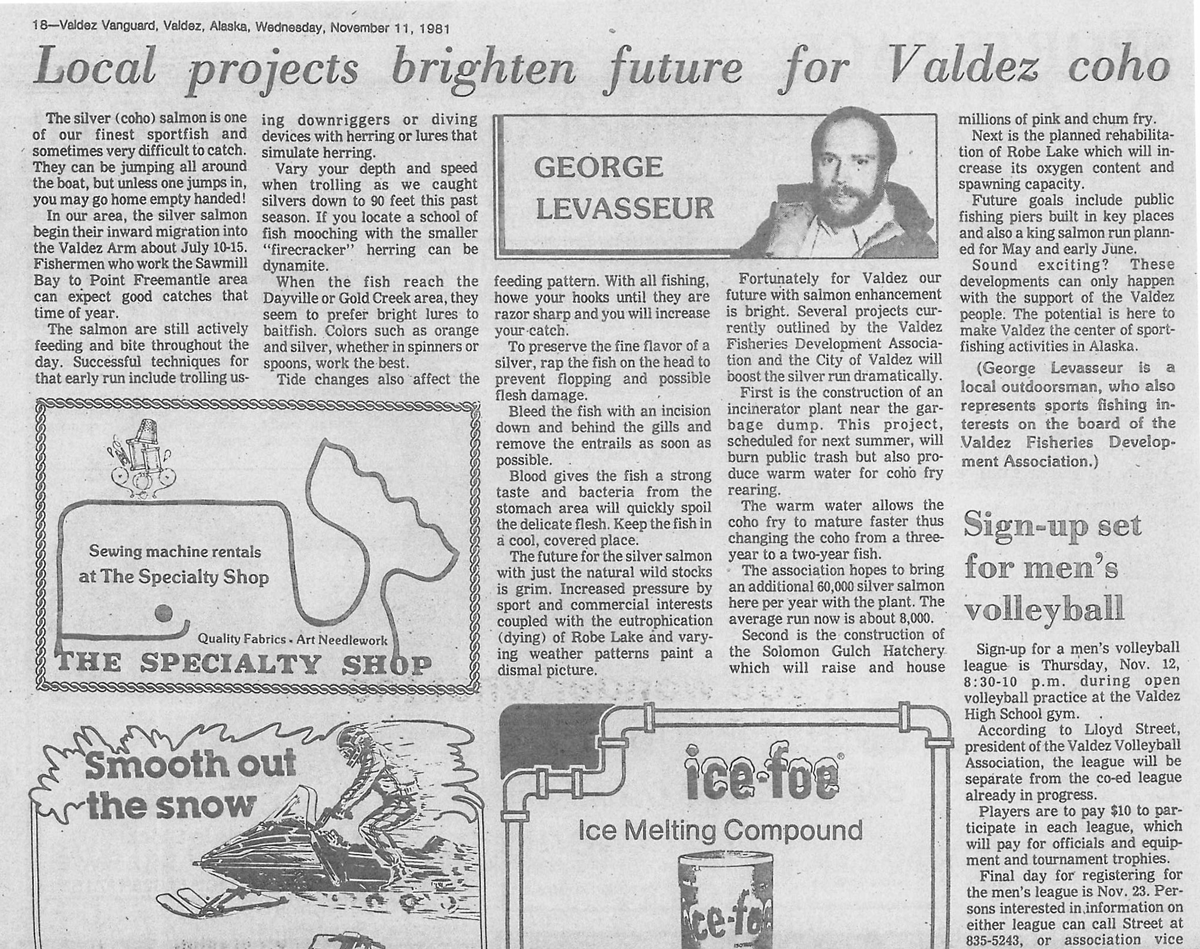
Valdez has a unique relationship with the sport-fishing community compared to other commercial fishing ports. Was this intentionally fostered by anyone at VFDA? Or did it happen organically because you’re on the road system?
“The road system, and for the people from Fairbanks and Delta, Valdez was their playground. Anchorage people always went south, pretty much, but Fairbanks, Delta, and Glennallen people came down to Valdez to fish silvers. Because of being on the road system and the friendships that so many people had with folks up north, it just sort of evolved into what it is today.
In Cordova, when I was the project manager when Walter Hickel was governor, he sat down at a table with myself and the DOT commissioner, and he said, “George, I want to drive to Cordova by the end of my term.” I said, “Yes Governor, we can do that, but I need help from your commissioners.” It didn’t work out the way we thought. It got close, but there was such a division in Cordova on almost everything. During my years at DOT, that always seemed to be a divided community.
Valdez wasn’t that way, people got behind things. There was probably always some dissension on things, but they saw the opportunity of building a sportfish fishery. It used to be–when I first got here–there were 5,000 silvers that maybe came in a year. And you take that 5,000 and you run it to 200,000; everyone comes down, they spend money, and the camper parks are full. Everyone makes more money. People are buying bait, fuel, groceries, visiting fish cleaners, processing, shrink wrappers, etc. It multiplies several times over. A dollar will turn over six times, maybe. There was never animosity that I experienced, except maybe from one board member against the sport program. There’s no reason you can’t work together.
We did have an issue early on because we tried to grow chums. Chums, they were tough. They were hit and miss. We’d get a big return one year, and for three years it’d be minimal. And they’d come back the same time as the silvers did, so there was conflict. I went to the board and I said, “This isn’t working. We’re putting in all this money in the chum program, and we’re not getting it back. Maybe one out of three years we get a decent chum run, but we’re making the whole sport fishery angry because the chums are in the shallows with the silvers.” We figured this out and knew we weren’t getting a lot of revenue for us or the seine fishery, so we abandoned it.

Paul McCollum Spawning VFDA Coho Salmon – Early 1980’s
We ironed out some things. We worked it out pretty well together. The bottom line is, if there’s enough fish to go around, everyone is happy. It’s when the pie gets smaller and your piece gets cut that you’re not as happy. That was the job, really, of getting VFDA going. It was to even out these bad years. There were years when people sat on the beach because there weren’t enough fish. At least now in the bad years we bring in seven or eight million fish to VFDA. People can get by if the wild run has failed or other hatcheries don’t come in like they should.
In the good years during the peak everyone’s happy. In the bad years, that’s where we really shine. Some years we had half the fish in Prince William Sound. One year we had thirty-four million pinks return. You know that Peter Pan and Silver Bay Seafoods wouldn’t have built facilities in Valdez without VFDA. That’s another big thing. We’ve got these big processing plants there that employ lots of people. That turns over several times in the community. Fish taxes, and everything else. That’s some of the things that have really been a positive.
All these years we worked hard at trying to foster cooperation and just to get along. ”
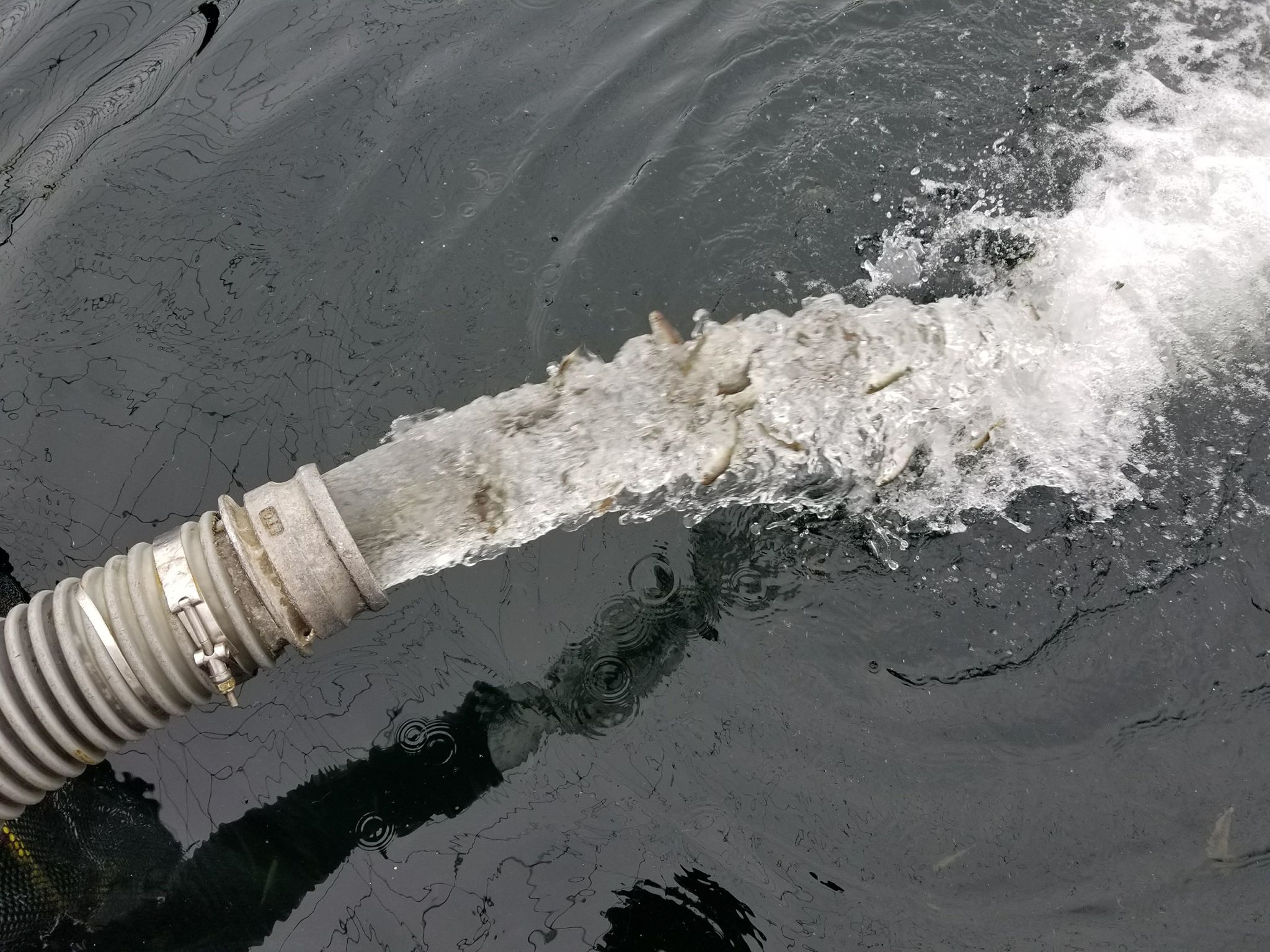 Coho Smolt Transfer to the Village of Tatitlek
Coho Smolt Transfer to the Village of Tatitlek
How has the relationship between VFDA and Valdez changed overtime?
“The community has always been very supportive. I used to go after money every year with the City Council, and we always had strong support. We contributed so much to the community, and all the business leaders were extremely happy. Now, the college even offers courses in fisheries management and hatchery operations, things like that. We’ve always been an integral part of the community and we’ve supported and worked well with all of our neighbors. We were working together.
In those early years we had trouble because after they built Solomon Gulch Dam the first few years there was a lot of silt in the water. Some years were worse than others for the eggs. And then being charged for water. I went to the Copper Valley Electric Associations board members individually, and I said, “Wait a minute, you’re going to charge us for water? Look at what we’re doing for the community. We’re a cooperative here. You have to cooperate too.” We worked it out and never really did get charged for water in the drier years, but they made some poor calculations on that dam height. It wasn’t high enough, so some years it would run out of water. We had other options, but that was a thing we worked out, and it wasn’t easy.
Then there were some permitting issues with DOT that I had my fingers in quite a bit. Permitting is complex, so one of the big challenges in the early years was figuring it out. You have to push hard, and you know what your goal is. You strive towards it. You know what your mission is. And we’d have board members who’d go beyond that, and I’d say, “Guys, go back to the mission statement that’s approved. If you want to change the mission statement, that’s fine. But this is our focus. It’s where it has to be.”
We were taken advantage of by very corrupt fish buyers, some who never paid bills and owed us money. The board would send me to negotiate because they would be so mad that they’d be afraid of getting in a fight. There were challenges there too.
Another time the board had to sign a huge promissory note. Only after did I tell my wife what I’d done. And she said, “You did what?!” It was a major commitment, but we had to keep the thing going. Some years weren’t as good, but overall it’s been a really good operation. It’s better now than it’s ever been. “
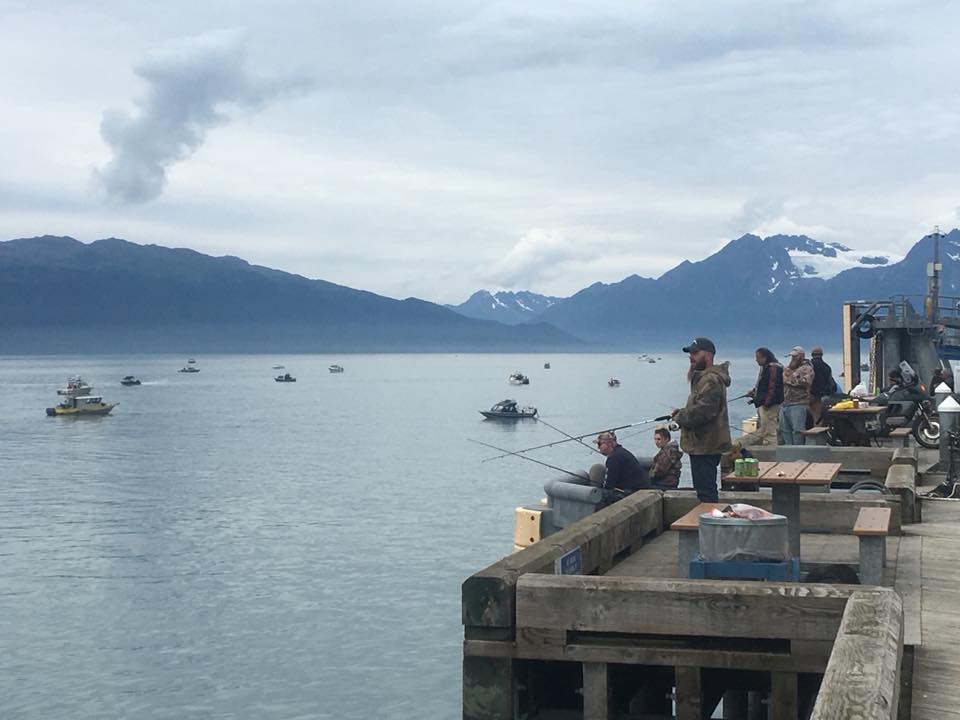 Sport Anglers Harvesting VFDA Coho, 2017
Sport Anglers Harvesting VFDA Coho, 2017
Can you talk with more specificity about what challenges you saw VFDA overcome during your time there?
“One of them was the limited land area, we just didn’t have enough room. Valdez is that way because you’re in a fjord. There isn’t the sprawling area you’d like to have. That was always difficult, trying to build more tide lands and lease them from DNR, that was a struggle.
Another one was Robe Lake. One of the parts of the VFDA charter was to expand the fisheries. This lake needed a lot of work. With that weed harvester the city bought for us we had a big project in the upper creeks. In 1982, I think, we had a big storm, and it filled everything with silt. The spawning creeks were ruined, the red run was gone, and we had a lot of silvers that would naturally spawn up there. We had a big project to clean that up.
The other one was when we tried really hard to work with the Alaska Department of Fish & Game to get a king salmon run in. We could never get them to come back, that was a challenge. There were other good projects too, but they didn’t go as we hoped they would.
We also had some groups from Cordova that were anti-hatchery that we had to fight, and we’re still fighting that today. They’re saying that the reds aren’t coming back because there are too many pinks–the escapement is too high—but we need to do more research.
There were also other things, like lawsuits that hammered us so hard. A processor sued us for breach of contract, we lost, and we paid a lot of money, which put us in bankruptcy for a short time.
We struggled in the beginning with incubation issues. We used the Zenger boxes and then the Super boxes. There were some years we had higher egg mortality because we had to get the boxes tweaked just right. That was pretty much hatchery-wide. People were trying to get the best set-up possible. Zenger boxes seemed to work pretty good, and then the Super incubators were a real blessing because that allowed us to double our production in the existing facility. Now, after expanding again, we’re up to 270 million pinks.”
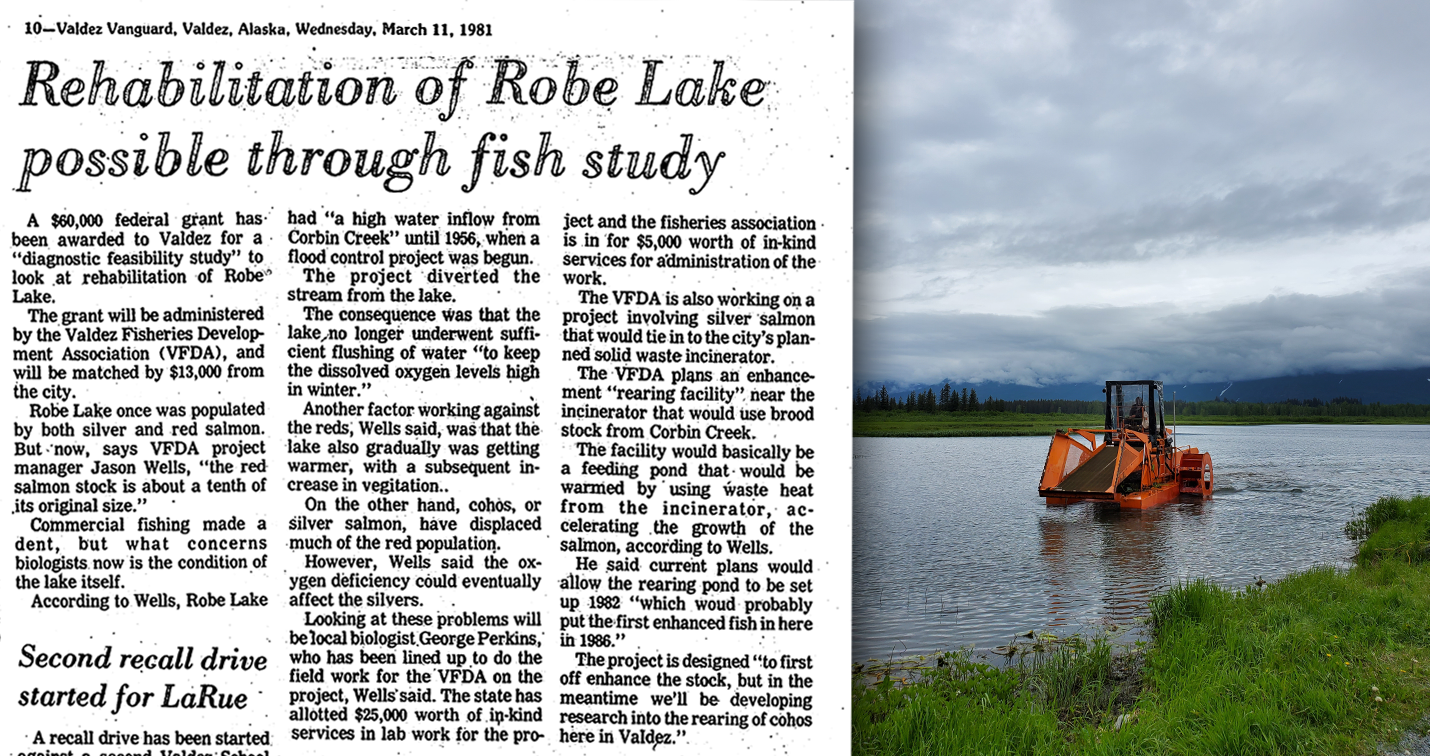
If you had to boil it down to the top 3, what would be the most important contributions VFDA has made to the region?
“First, from a commercial standpoint, adding to the good years, but more importantly providing income to fishermen in the bad years. To help in the poor years.
Second, a tremendous amount of money and spin-off that’s come from the sportfishing program for the city. All of this has basically benefitted Valdez.
Third, we employ 20+ people, and that’s a significant contribution to a small town. A lot of people also buy our products.
There’s another one: we have that freezer plant now, and some of the local fishermen use it to process their shrimp, halibut, etc., to market it themselves.”
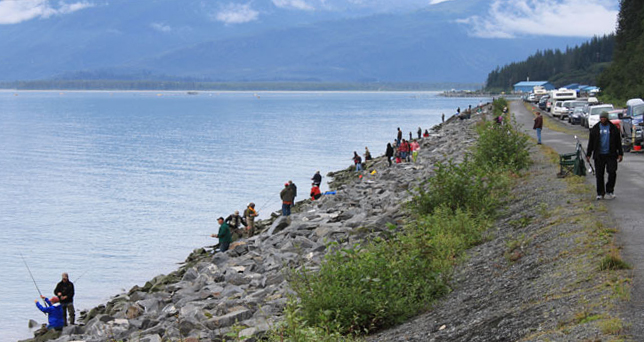 Sport Anglers line Dayville Rd to Harvest VFDA Coho Salmon, Labor Day 2017
Sport Anglers line Dayville Rd to Harvest VFDA Coho Salmon, Labor Day 2017
Given your knowledge of VFDA–as a local, stakeholder, and fishermen–what would you like to see VFDA accomplish in the next 40 years of operation?
“We have long term goals, which are to get the pink run up to 300 million and grow more silvers. If we can continue to produce fish like we have been to meet our long term goals, I think that should be our focus. Second, we want to develop our fisheries locally–both commercial and sport. We also want to provide enough fish for the canneries so that they employ enough people. That’s what I see. We also want to continue to stabilize our salmon runs. The other one is funding the research that we need. We need to do more research with straying, on ocean carrying capacity, and on ocean acidification. I was on the board of directors for the Prince William Sound Science Center and RCAC, so I’ve been involved with some of that too, but we have a lot of unknowns.
We’re to a point now where we’re replacing a lot of things at VFDA because facilities are 40 years old, and it takes money. We’re putting in new equipment and doing expansions. We got a good team now, too.
Set the course and stay the course. It’s easy to be diverted. Take care of yourself. Our facility here is probably the most cost-effective run hatchery in the state for how much money we spend and how many fish come back. If you do an analysis it’s right on the very, very top. We don’t get a lot of publicity, we don’t toot our horn; you’re just there providing, and making sure there’s fish for people to catch. ”